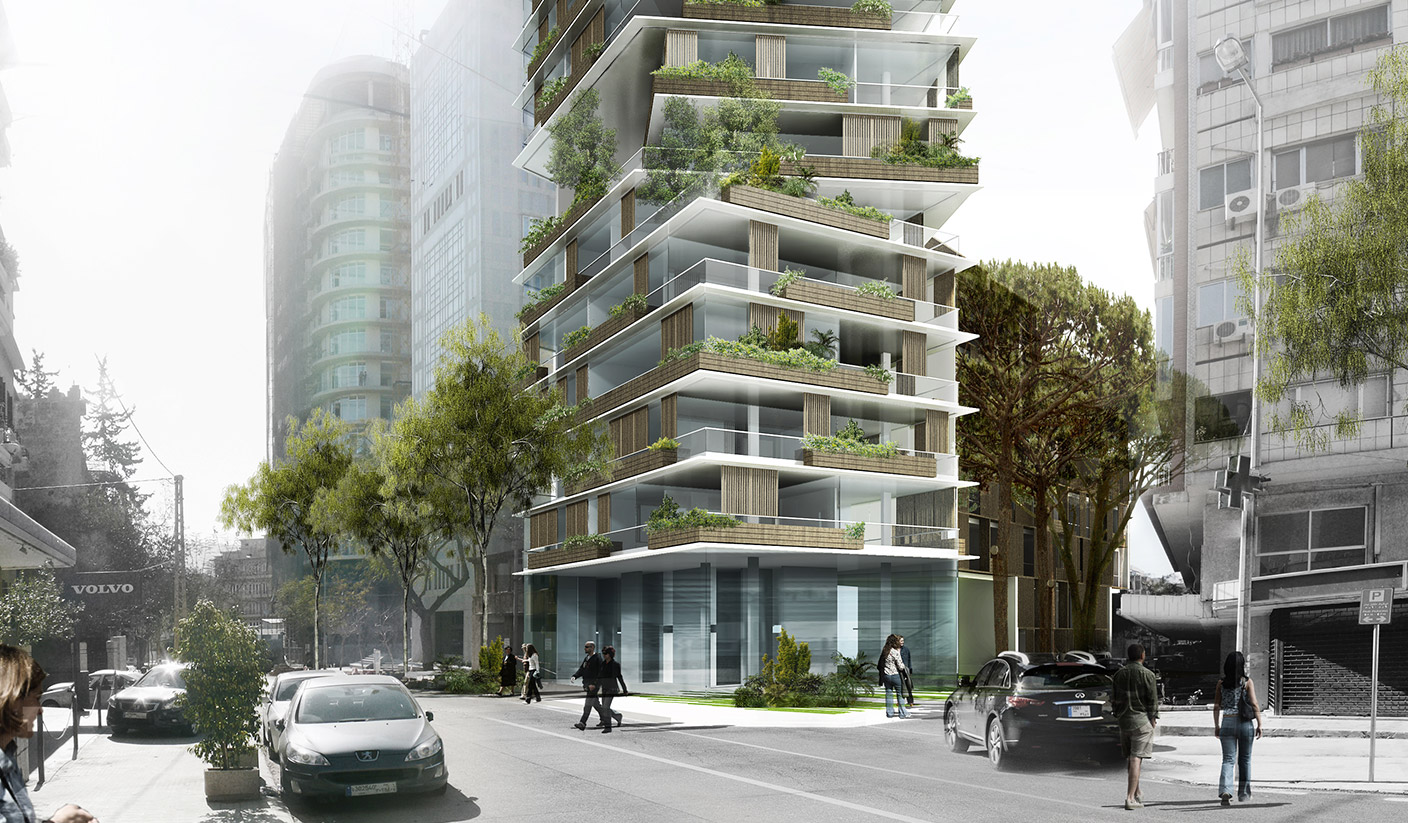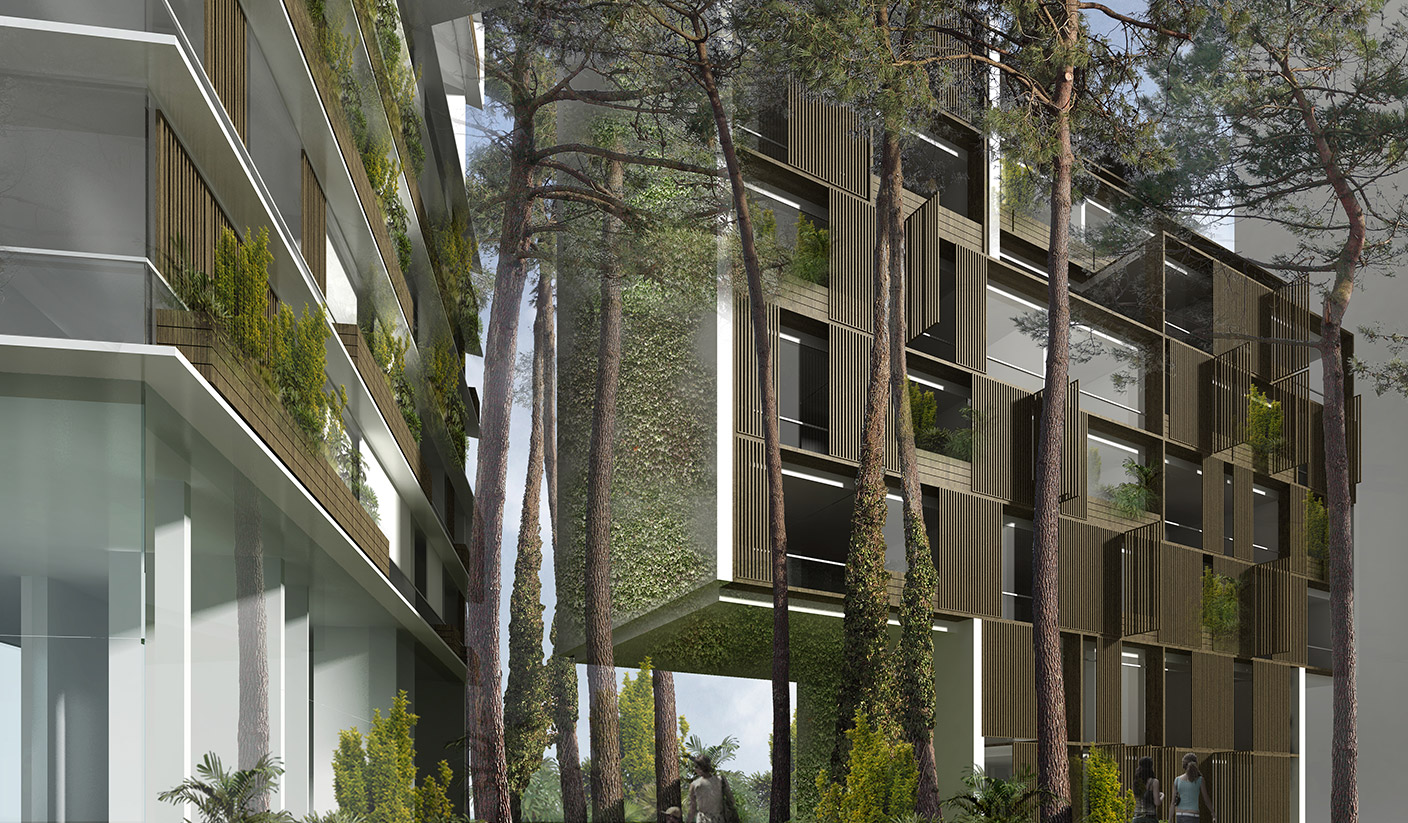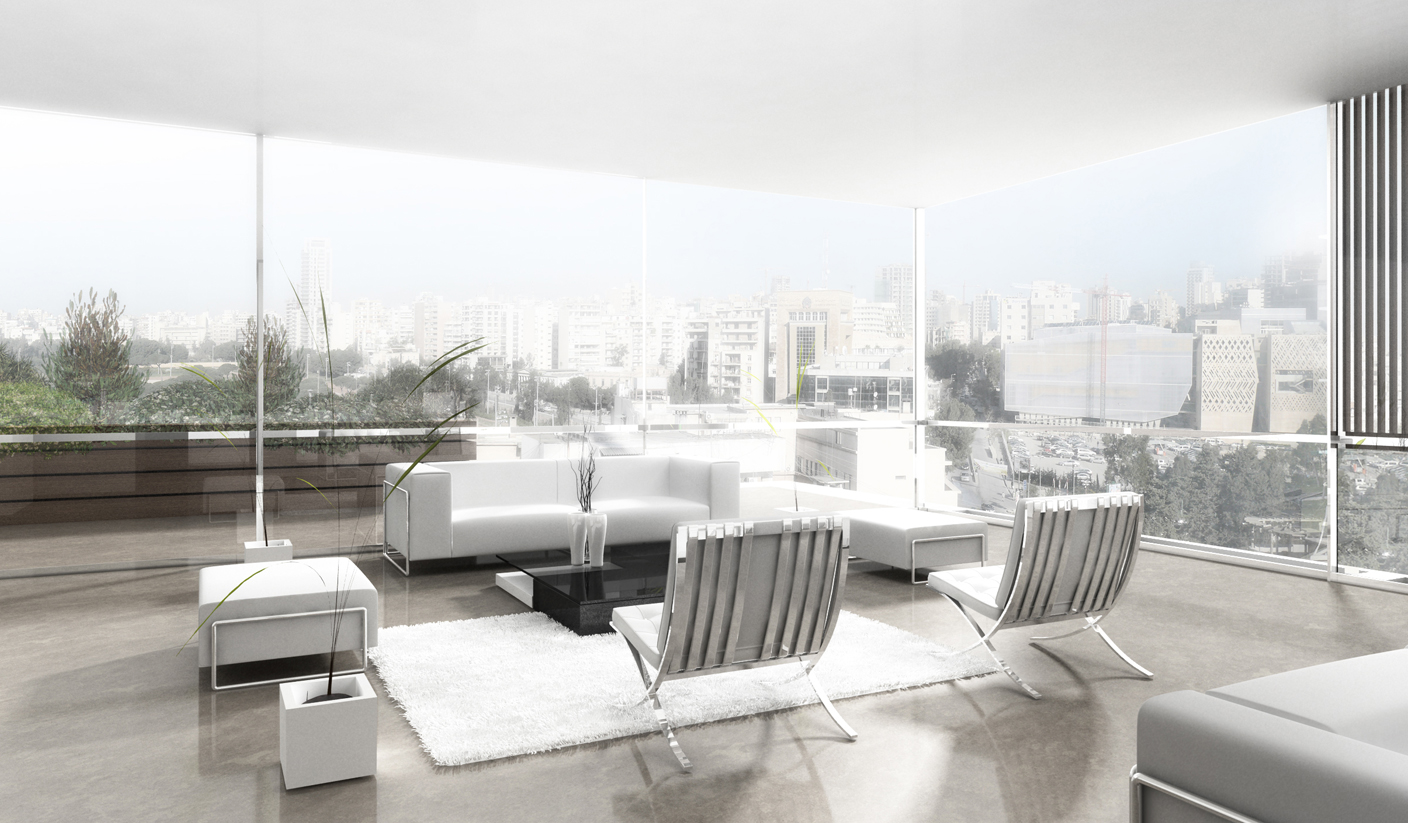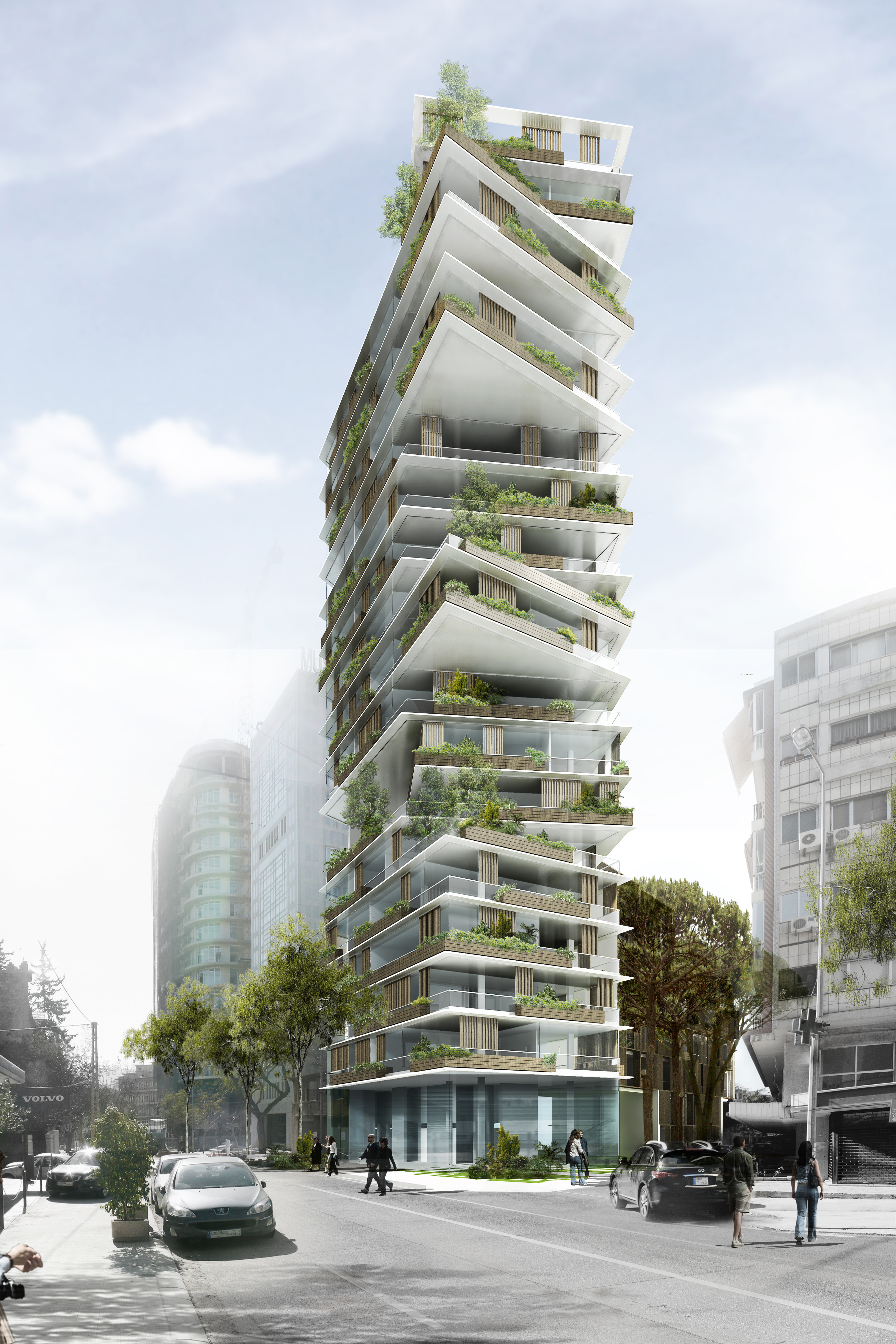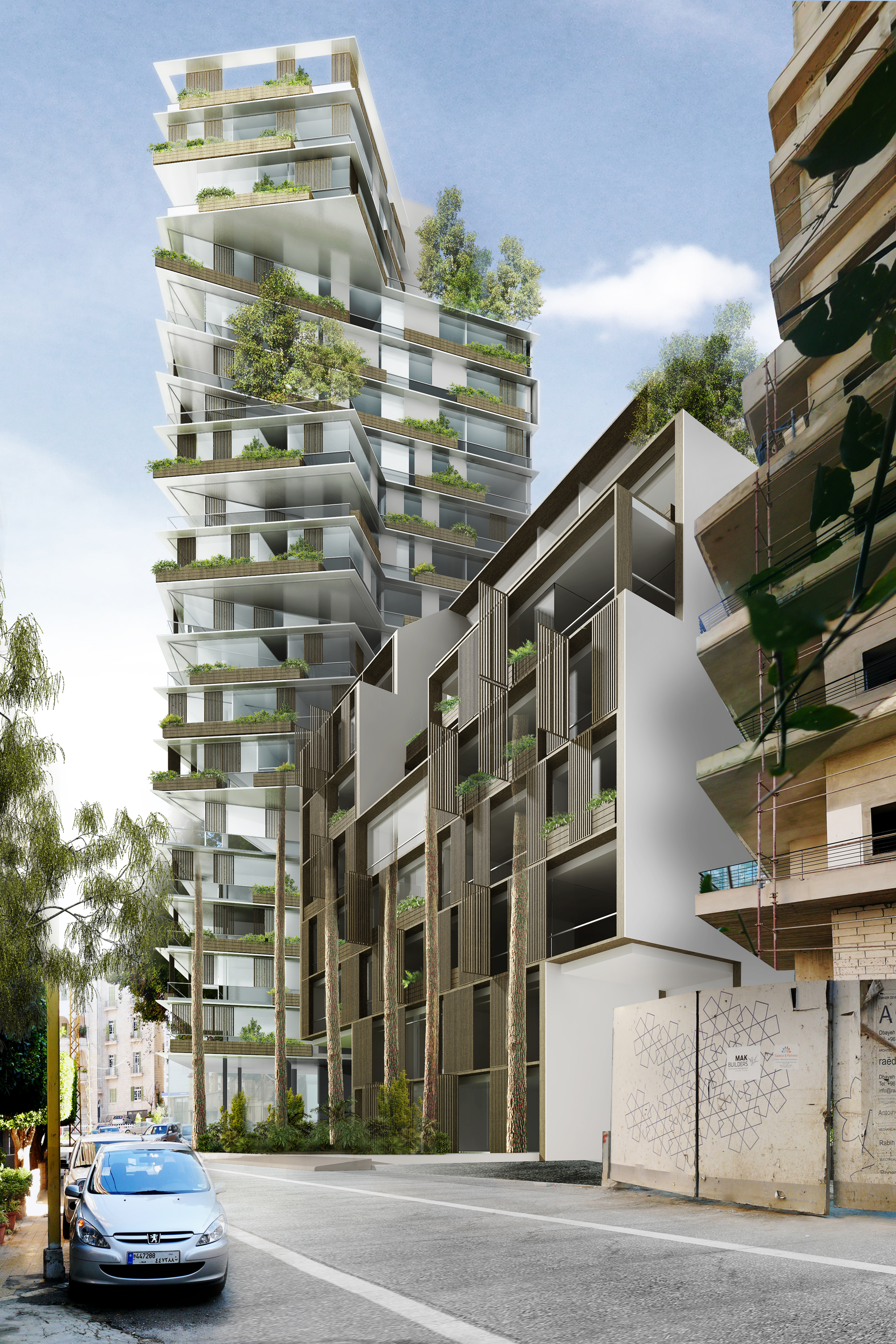Fact Sheet
- Project: Badaro 3696
- Category: Residential
- Location: Beirut, Lebanon
- Client: Kettaneh Construction
- Built-up area: 12,500 sqm
- Budget: 10M USD
- Year: 2013
- Status: First Prize Competition | Schematic Design
Credits
- Partner in Charge: Ibrahim Berberi
- Architect in Charge: Nada Assaf, Joy Traboulsi
- Team: Anthony Chemaly, Abed Baytamouny
Collaborators
- In collaboration with: Structural Consultant: B.E.T. Rodolphe Mattar |Mechanical Consultant: Ibrahim Mounayar |Electrical Consultant: Gilbert Tambourgi | Landscape Design: Atelier Hamra
- Renders: Tony Antoun
It wasn’t until the 1950s that Badaro, an area known for its pine forests, saw its first wave of urbanization happen almost overnight.
Architects at the time adhered to the International Style, believing that architecture should be standardized, driven by universal human needs. That uniformity lasted several decades, until the war and postmodernism caused an urban mutation that suffocated low-density areas in the build up.
Over time, the area’s residents adapted homes to meet their evolving needs. They improvised by transforming balconies into living spaces, and by cultivating balcony gardens to remedy a lack of green space.
When beginning 3696 Badaro, this popular demand for customizable living spaces took us, ironi-cally, to the standardization of the International style. We first created uniform architectural ele-ments, including one slab, a standard ceiling height and light greenery. We then introduced “kit architecture” – common elements residents can assemble according to their lifestyles. A flexible floor plan and façade components grant architectural freedom to residents and also to the build-ing’s owner, who can adapt floor plans to create bigger and smaller apartments in an uncertain market.
The approach is driven by the location of the site: one high-rise building on scale with the main road that passes in front of it, and another on scale with the internal neighborhood it faces. A common garden sits nestled between the buildings.
Over time, the area’s residents adapted homes to meet their evolving needs. They improvised by transforming balconies into living spaces, and by cultivating balcony gardens to remedy a lack of green space.
When beginning 3696 Badaro, this popular demand for customizable living spaces took us, ironi-cally, to the standardization of the International style. We first created uniform architectural ele-ments, including one slab, a standard ceiling height and light greenery. We then introduced “kit architecture” – common elements residents can assemble according to their lifestyles. A flexible floor plan and façade components grant architectural freedom to residents and also to the build-ing’s owner, who can adapt floor plans to create bigger and smaller apartments in an uncertain market.
The approach is driven by the location of the site: one high-rise building on scale with the main road that passes in front of it, and another on scale with the internal neighborhood it faces. A common garden sits nestled between the buildings.

